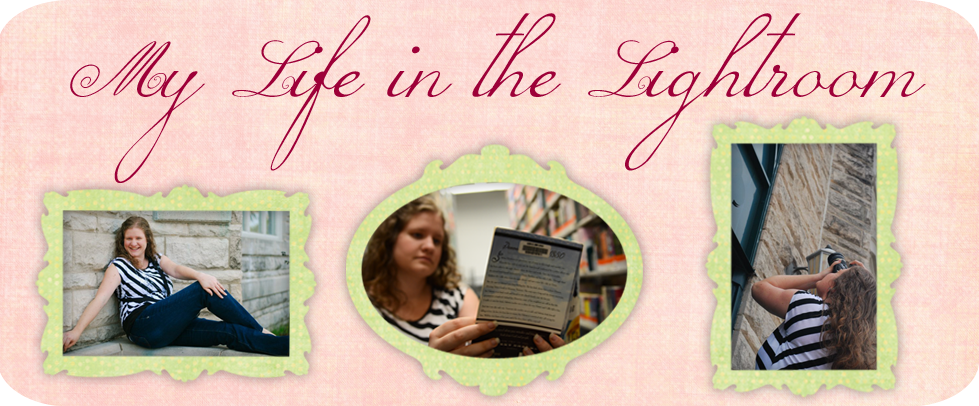Your camera is made up of several parts. The most important elements (in my opinion) are the sensor, the shutter, and the aperture blades.
-The Sensor & ISO-
The sensor is what absorbs the light and creates your photograph. When the shutter opens, the sensor receives the light and creates the photo. (Told you this was a crude and watered down version!!) Now, your ISO setting adjusts how sensitive your sensor is to the light that is let in. Changing your ISO from 100 to 200 will double the sensitivity, and it will absorb double the light that it did at ISO-100. Are you following me? Gosh I hope so!
Ok so with most basic cameras, the ISO settings are 100, 200, 400, 800, 1600. Now a math quiz. What is the pattern? "Oh me! I know the answer!!! The pattern is each number is multiplied by 2 to get the next number!" ::patting myself on the back for knowing the right answer::
So when you are outside on a really sunny day and nothing you do to your shutter speed or aperture is helping the over-exposed aspect of your photos, then you change your ISO sensitivity down. If it's at 200, change it to 100.
-Aperture Blades & Depth of Field-
Aperture is one of my favorite elements of photography. Each lens is equipped with aperture blades. These blades are set at a particular range to let in the desired amount of light. Here is a photo that shows what each aperture looks like in the lens.
This particular lens has 6 aperture blades. The more blades it has, the smoother the bokeh will be, but I'm getting ahead of myself!! Ok, so obviously, f/2 (read- f-stop 2) is going to let in a lot of light. F/16 is going to let in a very small amount of light. Some lenses are capable of f/1.4, and some are capable of f/32. You can only imagine how small that one is!! But I digress...
f/1.8
f/8
From the first picture, you can see my pens. Everything else is a blurry wonderland. You can vaguely make out shapes of the bowl and bottle near it, but it isn't until you see the second photo that you realize how cluttered the background space really is. This is your depth of field. The first photo at f/1.8 obviously has a shallower/narrower/shorter depth of field. The second photo at f/8 has a greater/wider/longer depth of field. (My sister keeps correcting me on those terms and I never remember which option she prefers, so I just put them all here!) Anywho, so the depth of field is the range from your focal point that is clear enough to distinguish what it is. It is also affected by how far your focal point is from the surrounding areas. This depth of field calculator should help. http://www.dofmaster.com/dofjs.html. Moving on!!!
-The Shutter-
The shutter is the mechanism that opens and closes after you press your shutter release button (better known to most people as the button you press to take the picture). After the button is pressed, the shutter will then open and close. It will remain open for the amount of time you set on your camera. If you have it set at 5 seconds, it will open for five seconds. If you have it set at 1/4000 of a second, it will only open for that long. Yes, they're super fast machines! Ok, so how does this relate to all of our other things? Well, the shutter speed and aperture will be the things you adjust the most. If you have a wider aperture (f/2, f/4, etc) then you can use a faster shutter speed because you are letting in more light per second. If you adjust your aperture to f/8 or f/12, then you will need to slow down your shutter speed to allow more time for the light to hit the sensor.
If you're at an indoor sporting event and there is poor lighting but you're DESPERATE for that great stop-motion shot, then turn up your ISO, deal with a little digital noise, and then you can get a faster shutter speed!
-Metering-
Ok, some aspects of this are still a bit fuzzy to me. Metering is basically aiming your camera at your subject, looking into your viewfinder, seeing the -......0......+ and seeing where the lines are underneath. For most pictures, your goal will be to have your line directly under the 0. This is technically the "perfect" exposure. This isn't always the case. Sometimes you will want to overexpose a photo, or underexpose a photo. Play, learn, and see what you like! I've seen it mentioned that it is better so slightly "over" expose a photo according to your meter, if it is of a person.. Do I understand it yet? No... :) Will I take out my camera and try, try again? Absolutely!!Anyway, you adjust your ISO, Aperture, and Shutter Speed to get the proper exposure!
Ok folks, that's all! Sorry for getting so wordy!!! I hope that this made sense!!!! Please let me know if you have any questions or if I sufficiently confused you! :)








As a pro, I think the KISS {Keep It Simple Stupid} method is perfect when it comes to photography!
ReplyDeleteGreat job!!
Thanks!! :) For a second I thought you were calling me stupid ;) Hahahaha
ReplyDeleteHahaha no way! The KISS method is taught in the military, and it should be utilized in every teaching environment. What kind of camera do you have?
ReplyDeleteI just have a D3000, hopefully upgrading to a D7000 within the next few months! ;) I've only had this one for a few months and I'm already experiencing limitations!! :P I guess that's a good thing? haha
ReplyDeleteThat's a wonderful thing! Seems like you really got the hang of it. You will love the upgrade!
ReplyDelete